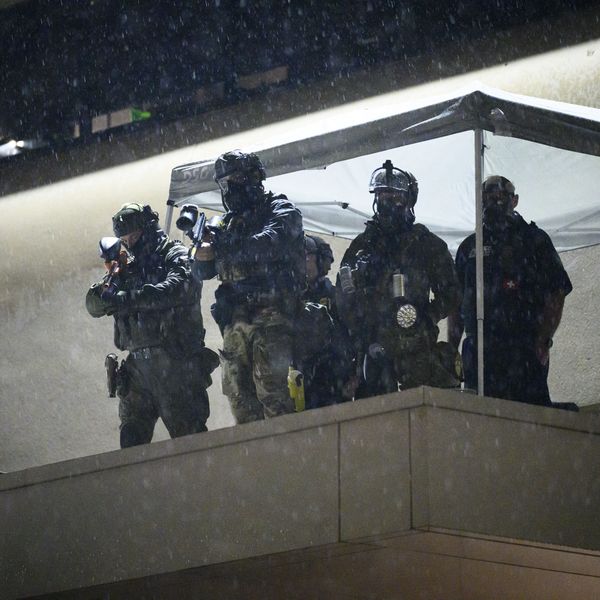The U.S. Bureau of Land Management has put the ecosystems, water resources, and residents of California at urgent risk, expert critics are warning, by accepting a failed scientific review of the dangers of fracking in the state as a basis to begin issuing permits for the controversial gas drilling technique as soon as next year.
The BLM-commissioned study was conducted by the California Council on Science and Technology and came in response to a lawsuit brought by two environmental groups--the Center for Biological Diversity and Sierra Club--who objected to the leasing of public land in California to oil and gas companies for the drilling process also known as hydraulic fracturing--which injects water, sand, and chemicals deep into the earth to release fossil fuel deposits trapped in shale formations. A federal judge ordered the study in 2013 after ruling that the BLM had violated state law by issuing oil leases in Monterey County, Calif., without considering fracking's environmental risks.
The findings of the report, according to the BLM, conclude that no serious dangers were found and signaled that fracking licenses could be issued on federal lands for drilling in 2015. Jim Kenna, the BLM's California state director, told reporters on a media call that the report would allow state regulators to authorized fracking while also monitoring for safety, environmental impacts, and health concerns.
But as the Los Angeles Times points out, even the independent research organization that conducted the survey on which the decision was based says the study had severe shortcomings and lacked key metrics.
[The report] authors noted that they had little time and scant information on which to base conclusions, citing widespread "data gaps" and inadequate scientific resources for a more thorough study.
For example, the report found no evidence of water contamination from fracking in California, but the scientist directing the research, Jane Long, said researchers also had no data on the quality of water near fracking sites.
"We can only tell you what the data we could get says," said Long, a former director at Lawrence Livermore National Laboratory. "We can't tell you what we don't know."
Environmental groups say the flaws of report are glaring--demonstrating a rushed process and an inadequate survey of data--and slammed the BLM for indicating that fracking leases would be approved based on such flimsy and inconclusive evidence.
"This report raises grave concerns about fracking pollution's threat to California's air and water, but it also highlights the fact that government officials have never collected the data needed to determine the extent of the damage in our state," said Kassie Siegel, director of the Center for Biological Diversity's Climate Law Institute. "A few months of incomplete data simply can't support a federal decision to resume selling off our public lands in California to oil companies. Using this report as a basis for continued fracking in California is illogical and illegal."
The poverty of the report would not be so bad, according to Siegel, if the coming decisions based on its findings were not so profound.
"How can we count on a fair and unbiased process for evaluating the decision to resume leasing when the head of California BLM has predetermined the outcome?" she asked. "First we get the verdict, and then we get the trial."
According to a review of the study by the San Francisco Chronicle, fracking in California may well, in fact, "endanger groundwater" in the state. The newspaper reports:
The report found that half of the oil wells fracked in the state lie within 2,000 feet of the surface, close to aquifers. Hydraulic fracturing uses a high-pressure blend of water, sand and chemicals to crack rocks containing oil or natural gas. Those cracks can sometimes extend as far up as 1,969 feet - not far from the surface.
Fracking chemicals, some of them toxic, could migrate along the cracks and leach into drinking water, according to the report. There are no recorded cases of that happening in California, the authors note, but it remains a possibility needing further study.
"In California, hydraulic fracturing is occurring at relatively shallow depths and presents an inherent risk for fractures to intersect nearby aquifers," reads the report, from the California Council on Science and Technology.
Water wells in Kern County, where most of California's fracking takes place, lie 600 feet to 800 feet below the surface, according to the U.S. Geological Survey.
In its analysis, the Center for Biological Diversity listed the federal review's most disturbing conclusions:
- Fracking in California happens at much shallower levels than elsewhere, and the report notes that, "Hydraulic fracturing at shallow depths poses a greater potential risk to water resources because of its proximity to groundwater and the potential for fractures to intersect nearby aquifers."
- The study notes that investigators "could not determine the groundwater quality near many hydraulic fracturing operations and found that existing data was insufficient to evaluate the extent to which contamination may have occurred."
- Some fracking chemicals used in California are "acutely toxic to mammals," the report says, while also noting that "No information could be found about the toxicity of about a third of the chemicals and few of the chemicals have been evaluated to see if animals or plants would be harmed by chronic exposure."
- The report says that "Current practice and testing requirements do not necessarily protect against adding produced water contaminated with hydraulic fracturing fluid to water used in agriculture."

